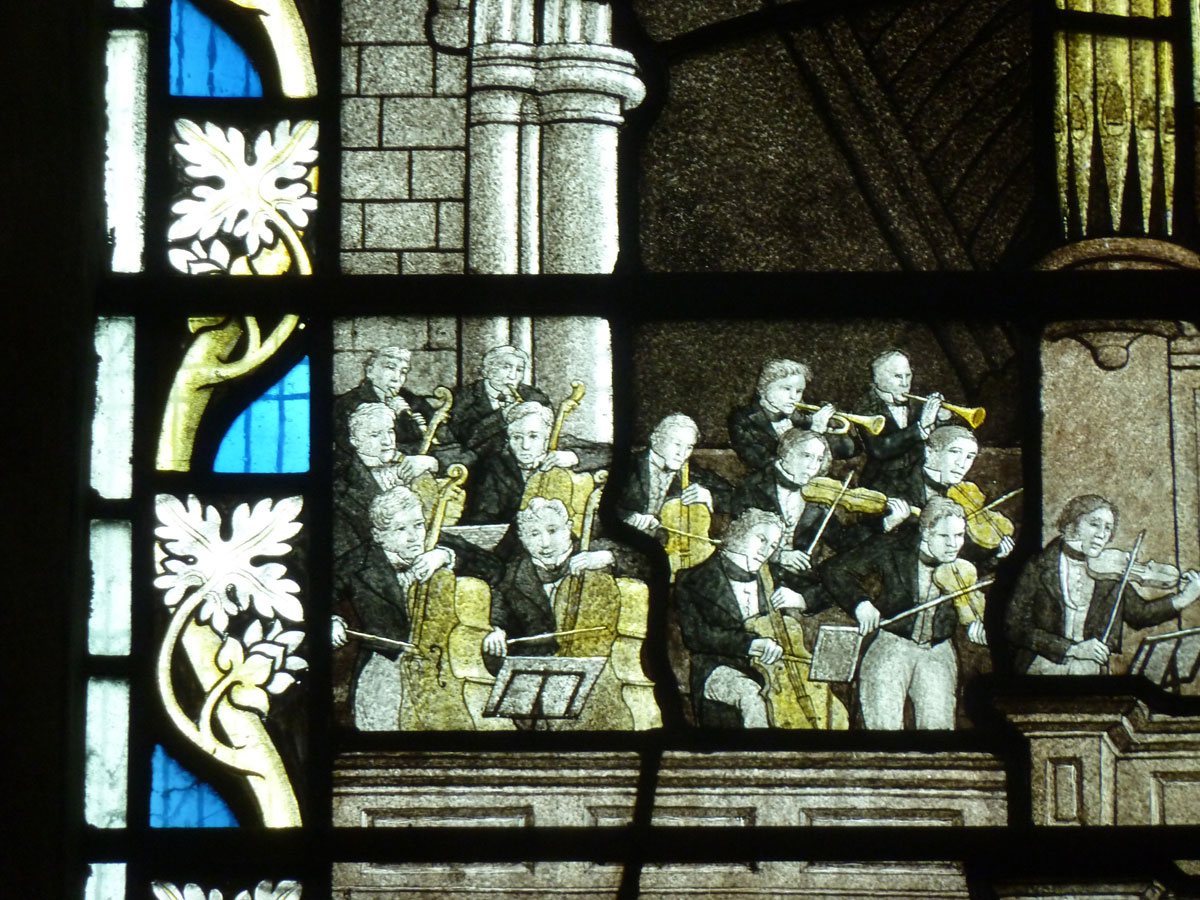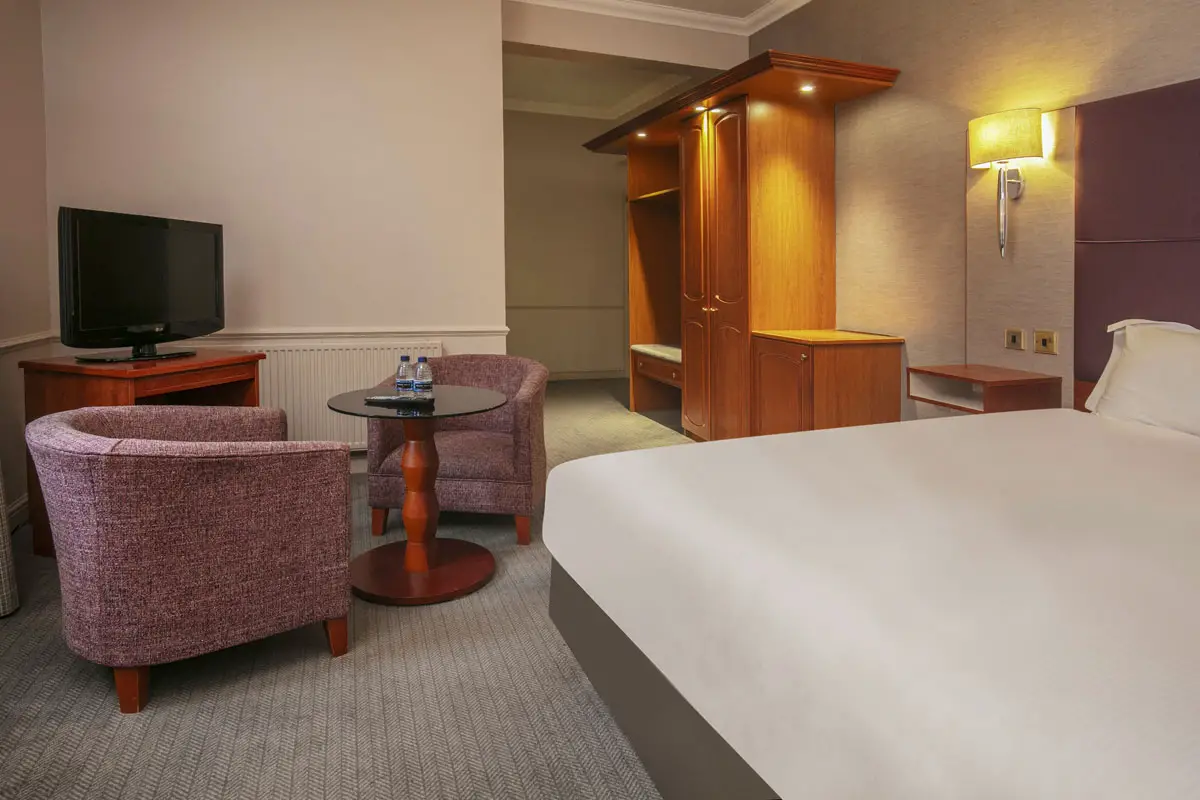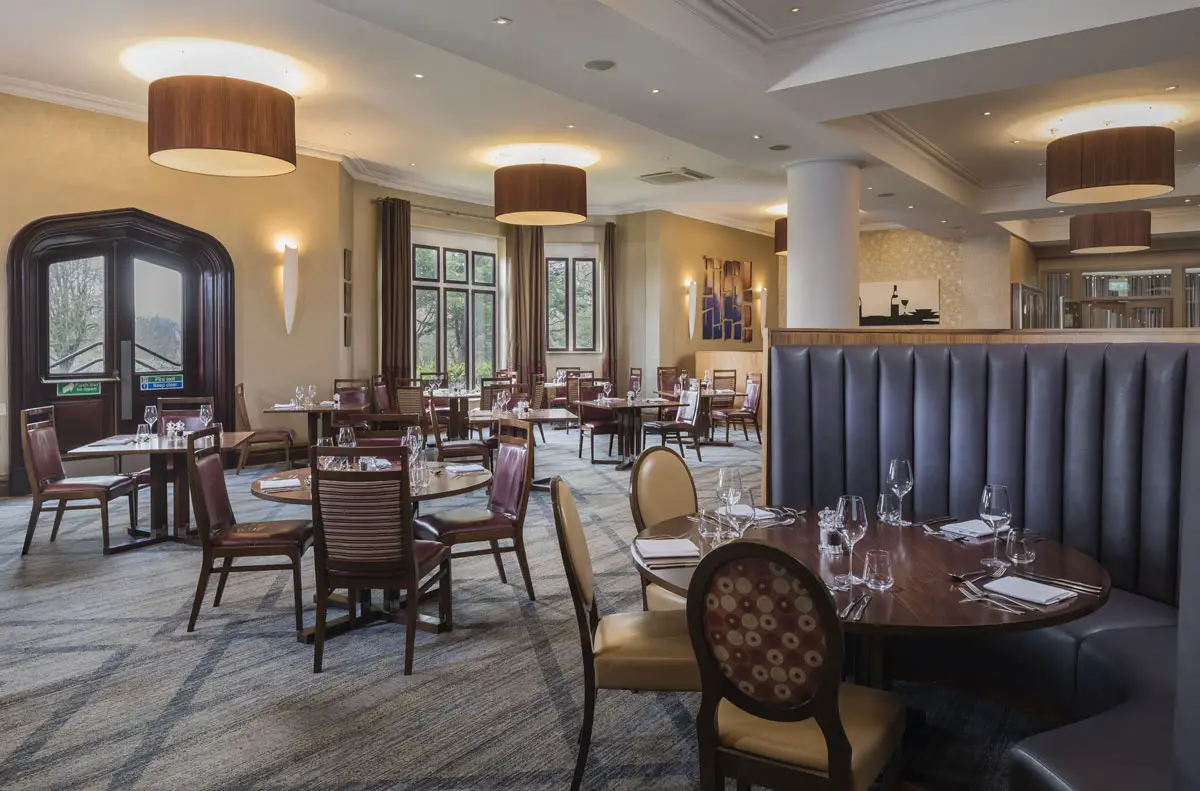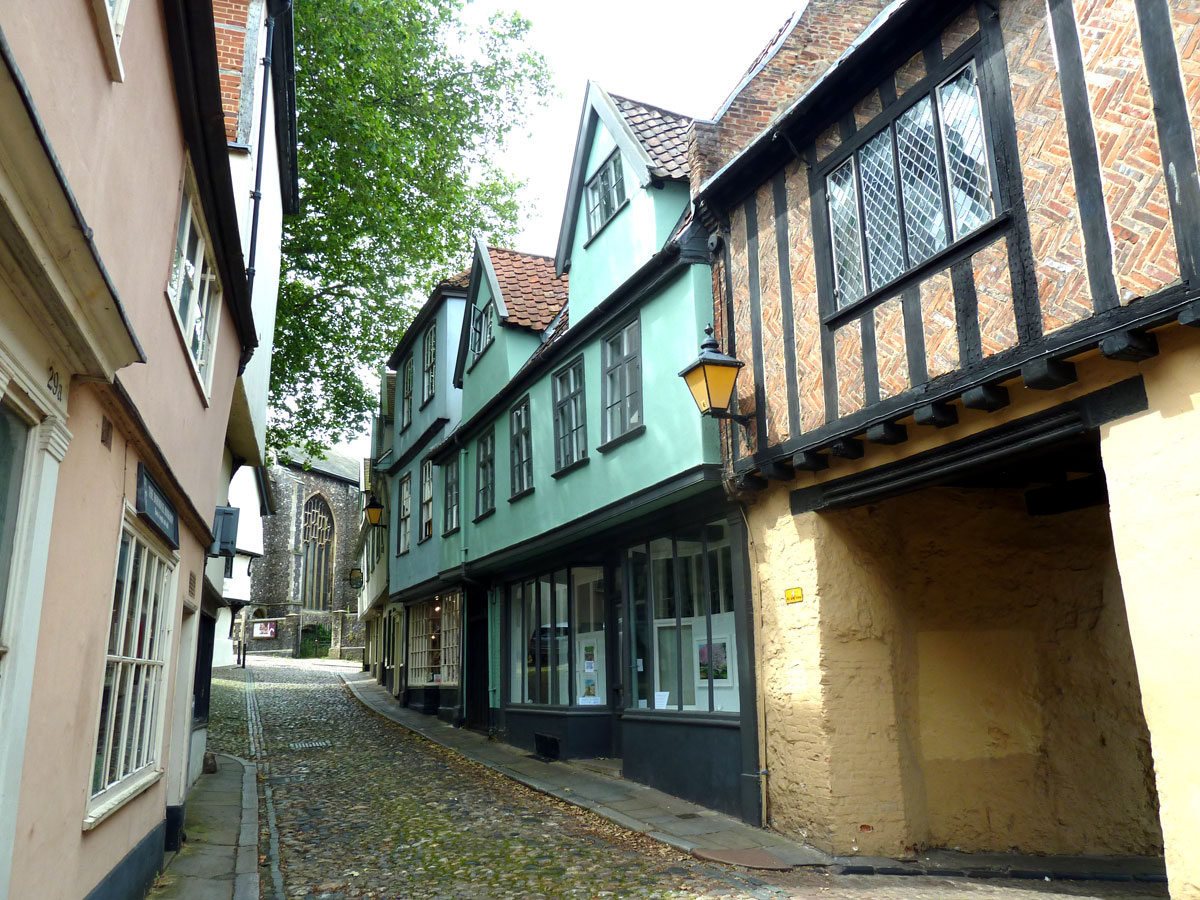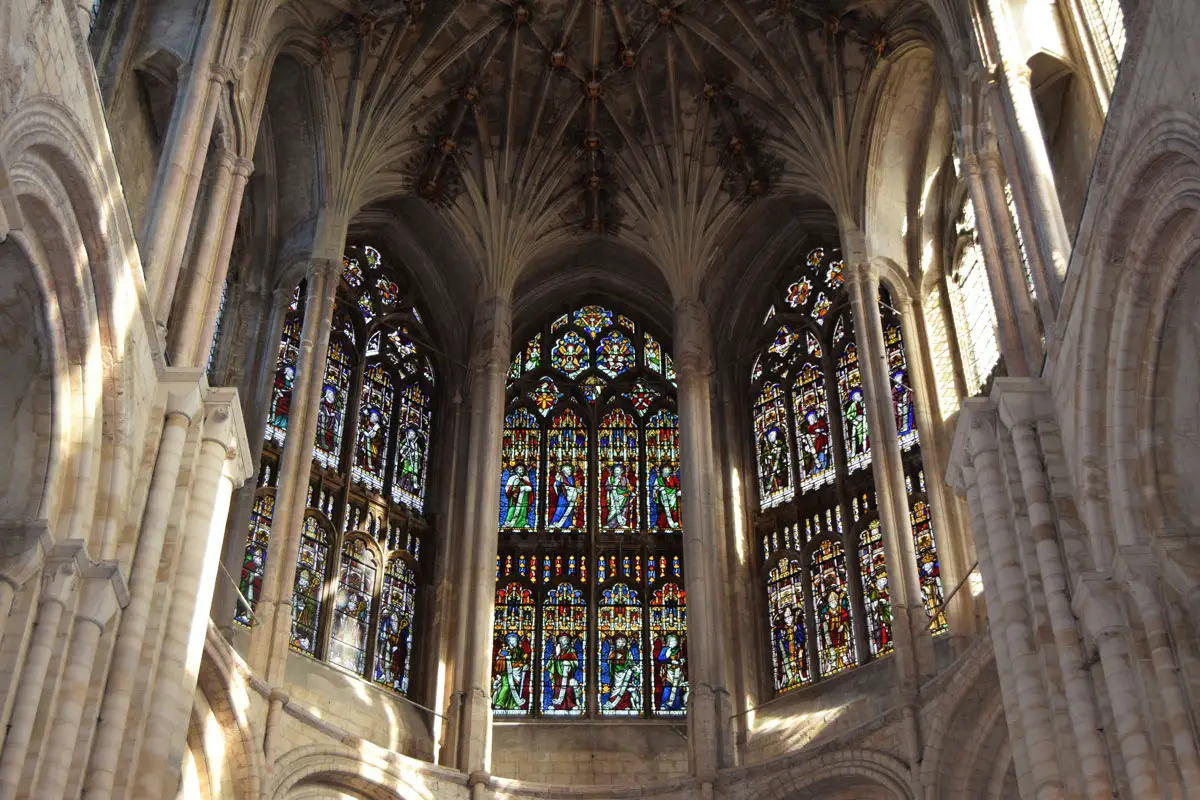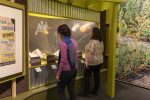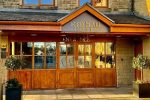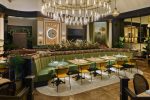Norwich, and Dunston Hall Hotel, Spa & Golf Resort – Review
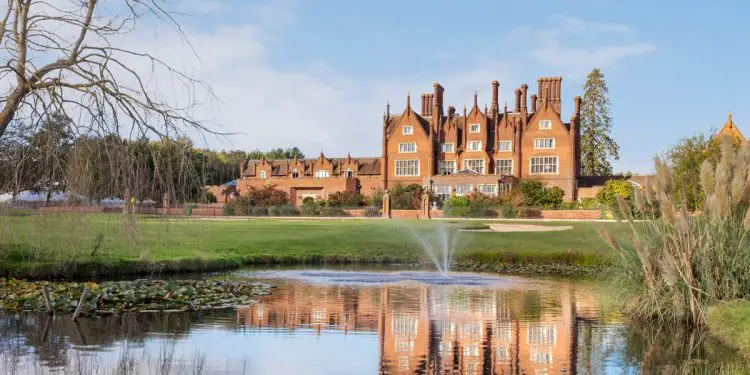
By Clare Jenkins, August 2024
In the porch of Boston’s St Botolph’s parish church, there’s a list of officials, together with their photos. So far, so CofE. But it’s the last photo that catches the eye: of the church’s ‘morale officer’, Chester. Because Chester is a dog – a fluffy, floppy-eared, eminently strokable dog with a very appealing face. He’s often to be found wandering around the nave, calmly greeting visitors and accepting all the fuss. No wonder St Botolph’s was once named Animal Friendly Church of the Year.
My husband and I stopped off at St Botolph’s – aka Boston Stump – on our way from Sheffield to Norwich, coinciding not just with Sung Eucharist (another dog joined the procession, though without clerical vestments), but also, outside in the Market Place, with a food festival and ‘Boston’s Strongest 2024’ contest. Here, beefy men and women were demonstrating their strength – albeit invisibly from behind a crowd – via a series of gruelling tasks. Hence the grunts and groans we could hear.
But our taste was for the spiritual rather than the temporal, and the 14th Century St Botolph’s has more than its fair share of the former. ‘Lincolnshire’s most celebrated landmark and lighthouse to the Fens’, wrote Simon Jenkins in his guide to England’s Thousand Best Churches, ‘is also a wonder of medieval engineering… At 272 ft it is the highest church tower, not counting spires, in England.’
“Stained glass is glorious”
According to the 1965 Shell Guide to the county, it ‘rises out of the Fens like a miraculous apparition….’ And, thanks to its vaulted lantern ceiling, ‘The view upwards in the early evening light is like peering into the canopy of a rain forest.’
The interior is certainly impressive. And some of the stained glass is glorious, not least the modern (well, 1939) windows depicting Georgian musicians playing Handel’s Messiah here in 1807, with a Jane Austen-style chorus of women in Empire-line dresses and crinkled bonnets.
The window also shows the then American Ambassador at the reopening of the Cotton Chapel in 1857. John Cotton was Nonconformist minister at St Botolph’s in the early 17th Century, becoming increasingly radical until the authorities forced him into hiding. So in 1633 he followed some of his Puritan flock out to America, where they’d founded Boston, Massachusetts.
“Impressive entrance”
We were heading for Norwich and Dunston Hall, one of 20 four-star QHotels Collection properties across the UK. From the outside, the 166-bedroom hotel, built as a private home in the 1850s, looks like a handsome Elizabethan red-brick manor house. Four storeys high, it has intricately carved stone chimneys and pinnacles and mullioned windows, and is surrounded by extensive, manicured grounds that include an 18-hole golf course.
Inside, though, it’s less characterful: dark grey and brown décor, padded plum-coloured leather chairs and Chesterfield sofas, a rather charmless reception. Despite the eye-catching framed black-and-white photographs of the local area, there seemed too much empty space.
Our room – a Deluxe King – was in the warren of buildings stretching out behind the impressive entrance, so off we wandered, up and down stairs and in lifts, wishing we’d brought a ball of string. Again, the room was functional rather than colourful, with a lumpy-looking (though actually very comfortable) bed, wide-screen TV, useful desk and fridge – and a fine view of the car park.
“Easy reach”
Later, we found our way back to the Brasserie, another large space with standard-issue furniture: dark red chairs, dark grey banquettes, teak tables… The food, though, was excellent and generously portioned: creamy pea and mint soup for me, heritage tomato and burrata salad for my husband, followed by hearty parsnip Wellington (him), tomato penne pasta (me), with sides of delicious sugar snap peas and leeks. We left the delicious grilled halloumi and mixed grain salad for Night No 2.
At breakfast the following morning, we were surrounded by golfers in smartly ironed shorts, women in summery dresses and flip-flops, the odd non-golfer with full tattoo ‘sleeves’. The buffet spread (cereals, full English, juices and fruit salad) was perfectly decent, though the scrambled eggs, served in a pot, looked (and tasted) unappetising.
One of the best things about the hotel for a non-golfer is its location: just four miles to the south of Norwich and within easy reach of the Norfolk Broads and the coast. It’s also just a few minutes’ drive from the Harford Park and Ride interchange and the 502 bus into Norwich. After all, we’d taken note of what the Shell Guide to Norfolk warned back in 1969: ‘The narrow streets are a nightmare to the motorist’ and ‘The parking of cars, as much a problem in Norwich as elsewhere, has invaded the [Cathedral] Close…’
“Prettily painted”
The 502 took us straight to the city centre. Most of our fellow passengers got off at the bus station, but we headed onwards to Elm Hill, a narrow, cobbled street in the heart of medieval, Saxon and Tudor Norwich, with its fair share of half-timbering and herringbone brickwork and the occasional Georgian façade.
The area was almost demolished as part of slum clearance in the 1920s. Thank goodness it wasn’t, because it’s now a warren of independent shops and cafes – including the Briton’s Arms, a former nunnery. The houses are oddly slanted, prettily painted and pantile-roofed, their little gardens full of lavender and thyme, plaques or old lamps hung outside.
Here you can find historic pubs, secret courtyards, a short-lived Benedictine monastery founded by a Fr Ignatius in 1864 and a 500-year-old building that now houses The Strangers Club, ‘an exclusive private members club’. Sadly, though, no elm trees – the last of those planted in Henry VIII’s time died of Dutch elm disease in the 1970s.
“Vaulted walkways”
Tombland Alley (Tombland meaning empty land or space) houses one of three medieval churches in Norwich dedicated to its patron saint, Saint George. And, just across the road, is Norwich Cathedral itself, the most complete Norman cathedral in England, over 900 years old and described on its website as ‘one of the finest examples of Romanesque architecture in Europe’. At 315ft, its spire is the second tallest in the UK after Salisbury, rises high above the city skyline and provides shelter to a family of peregrine falcons.
And it is splendid, with its vertiginously soaring nave and hundreds of colourful medieval roof bosses depicting Biblical figures and scenes – the biggest collection of its kind in the world. The vaulted walkways of its cloisters – the largest monastic cloisters in the country – link the cathedral to the Chapter House, the original Library and the Refectory, where two bowls of tomato and tarragon soup cost an eye-watering £17…
Outside, the Cathedral Close is a much-valued green space, its 44 acres including a river walk, a herb garden, and a statue of Lord Nelson, the 14th Century Grammar School’s most famous old boy.
“Attractive”
Another statue, at the front of the Cathedral, honours Edith Cavell, the First World War nurse born at nearby Swardeston in 1865, who worked with the Belgian underground resistance to shelter over 200 Allied soldiers there, helping them escape to neutral Holland. For this she was shot by German soldiers on 12 October 1915, saying on the night before her execution, “Standing as I do in view of God and eternity, I realise that patriotism is not enough. I must have no hatred or bitterness for anyone.”
Following a funeral at Westminster Abbey, she now lies buried in the cathedral grounds, her plain light grey gravestone a replica of those honouring soldiers who died in the war. It’s all very touching, as are the two stained glass windows depicting 1st World War soldiers in the trenches.
Back at the hotel, I had a tour taking in the attractive Garden Terrace, the Tea Snug for afternoon teas, the range of conference-cum-prom-ball-cum-party suites, the health club with gym and swimming pool, and a range of suites. Those in the original Manor House come complete with four-poster beds, and some have views across the golf course towards Stoke Holy Cross village.
There’s also a newly refurbished spa, where therapist Haley gave me a wonderfully relaxing, frangipani-scented ‘Revitalising Ritual’ body scrub, plus back massage, soothed by calming music.
Before leaving, we checked out Stoke Holy Cross church (sense a theme emerging?) with its memorial to a surgeon carved with surgical instruments, its lovely Art Nouveau plaque to local men who died in the First World War, and its grotesque head corbels outside. Sadly, though, unlike at Boston Stump, there were no dogs.
Dunston Hall Hotel , Ipswich Road, Norwich, NR14 8PQ
Room rates at Dunston Hall Hotel, Spa and Golf Resort start at £120 for a double room
dunstonhallhotel.co.uk
